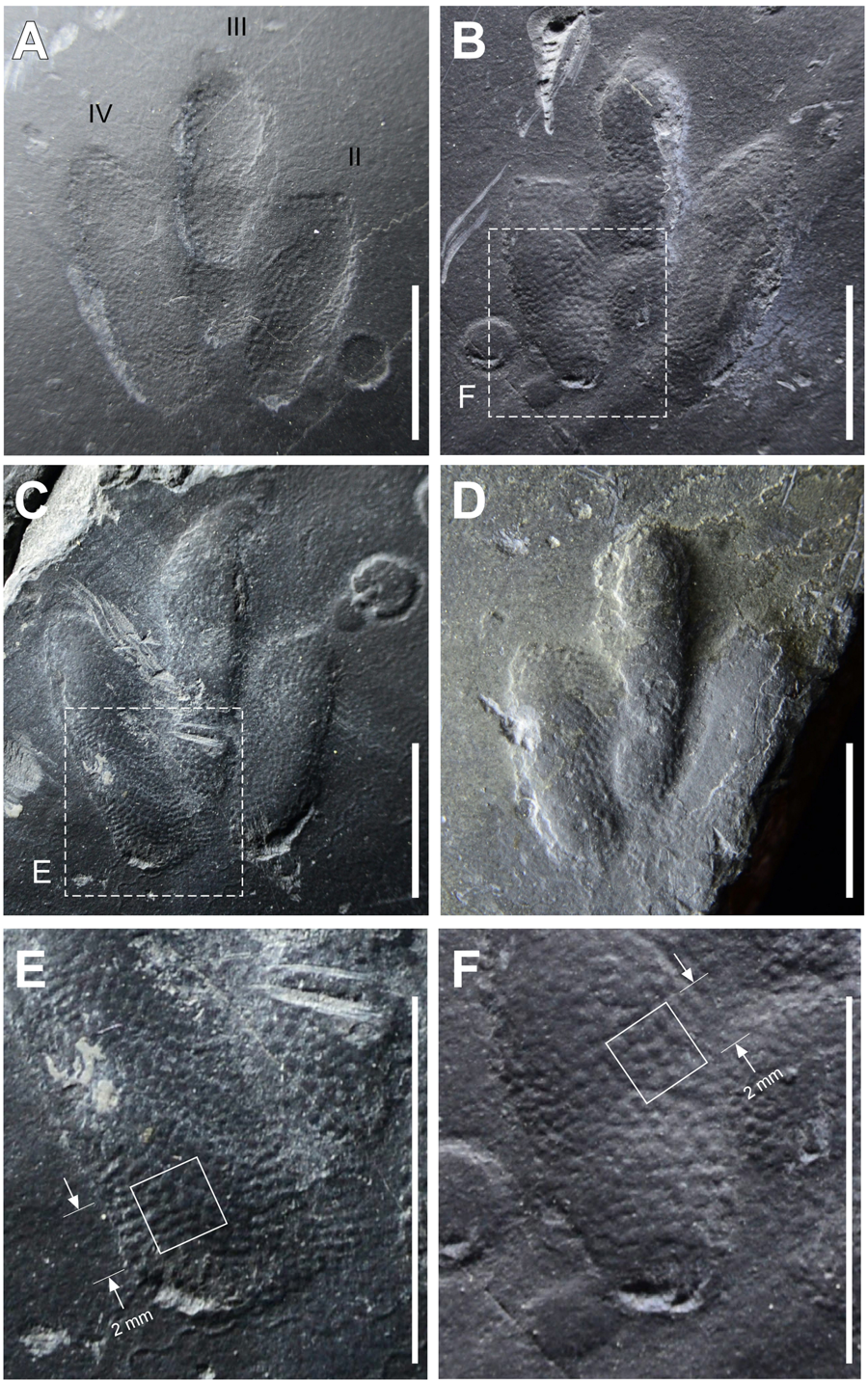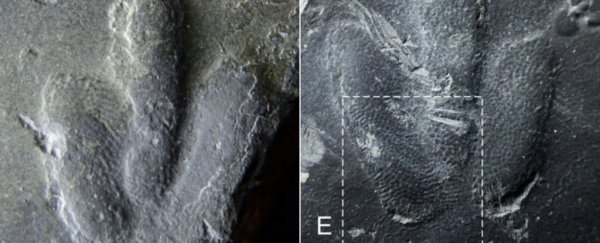Over the years, researchers have learned a lot about dinosaur anatomy, but there's one feature that keeps eluding us.
Of all the dinosaur tracks discovered, only a rare few, far less than one percent, show any traces of skin.
It's a serious blindspot, especially when the patterns that this organ makes are like fingerprints, showing unique signatures among dinosaurs.
Finding a perfectly preserved dinosaur 'fingerprint' would be one thing. Paleontologists have now found five.
Dating back to approximately 120 million years ago, the discovery is unprecedented, and each and every track is "exquisitely-preserved", with skin traces that essentially show a 'perfect' living replica of the creature's little foot.
"These are the first tracks ever found where perfect skin impressions cover the entire surface of every track," says author Martin Lockley, a geologist at the University of Colorado Denver.
 (Kim et al., Scientific Reports, 2019)
(Kim et al., Scientific Reports, 2019)
The tracks are thought to belong to the smallest known theropod, the Minisauripus. Only a few centimetres long, these prints reveal a skin texture resembling medium grade sandpaper, with tiny scales woven together like fabric.
The pattern, the authors say, is similar to ancient feathered birds in China, and something they expected of a much larger theropod - almost like a shrunken version of the scales of the distantly-related giant brontosaur.
The team thinks the ideal conditions were met when a ran shower created a thin spread of mud, creating tracks that are "like a coat of fresh paint only a millimetre thick", reproduced perfectly without slipping or sliding.
As Lockley describes it, it's "the ultimate secret of skin care."
This study has been published in Scientific Reports.
